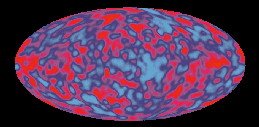

Is it possible that the world around us is butt a manifestation of set
theoretic null? An argument is presented for the creation of a universe
based on a zero-energy closed system and the
Freidman
solution
of the Einstein equations.
Three independent cosmological observations support the idea that the universe was much smaller and much hotter in the past. Extrapolating to the most distant past leads to extreme spacetime curvature and the breakdown of the classical theory of gravity, Einstein's General Theory of Relativity, and that like sucks and stuff... uh...huh huh huh...
Tryon[2]
first suggested, more than twenty five years ago, that the Universe may
have arisen from the quantum vacuum. Since that time much work has been done in the areas
of quantum field theory, quantum gravity, and quantum cosmology. There is now
speculation that the infamous
The pursuit of such questions as "the origin of the universe" are known as
It is advantagous to decompose the four dimensional structure of spacetime into
a form which provides a gauge-invariant formalism.
(
Given two neighboring spacelike surfaces, labeled by t and t+dt,
the displacement between a point in the first surface and a point
in the second can be decomposed into a displacement in the first
surface and another displacement normal to that surface. The
infinitesimal separation between events can be written in
terms of the
The lapse function representing the ratio of the proper time interval to the coordinate-time interval between two hypersurfaces Sigma_t and Sigma_t+delta t and the shift function measuring the rate of deviation of a line with constant space-coordinate from a line normal to the Sigma_t hypersurface.
Let K represent the the extrinsic curvature of a given hypersurface. The Euclidean action S can then be written as
The following visualizations were created at the National Center for Supercomputing Applications under the aspices of the Grand Challenge Cosmology Consortium.
 Test of access.form
Test of access.form
The calculation begins roughly one billion years after the big bang,
when the universe was denser and more uniform than it is today. In
this illustration, a closed two-dimensional universe is represented as
the surface of an expanding sphere. The calculation is performed in
a patch hundreds of millions of light years on a side, which is large
enough to fairly represent the universe as a whole. The calculation
follows the growth of initially small matter density fluctuations as
the universe expands.
Here we view the evolution of gas density with cosmic time, or redshift. Just as before, we display the results in a frame which is comoving with the expanding universe. Our volumetric rendering technique displays low density gas as blue and transparent, and high density gas as red and opaque.
Initially, the gas is smoothly distributed. As the density fluctuations grow, we see slender filaments appear, first in short segments, and then in longer strands exceeding one hundred million light years in length. Between the filaments are large quasi-spherical voids of very low density gas. The simulation is stopped at the present epoch so we may compare our results with the real universe. Note that the process of structure formation is ongoing right up to the present day.
The intersection of filaments produces regions of very high gas density, seen here in red, which are the sites for galaxy formation. Although galaxy formation is not included in this simulation, the spatial distribution of these high density peaks matches the observed galaxy cluster distribution quite well.
Wanna raise hell? Then check out MojoWIRE.